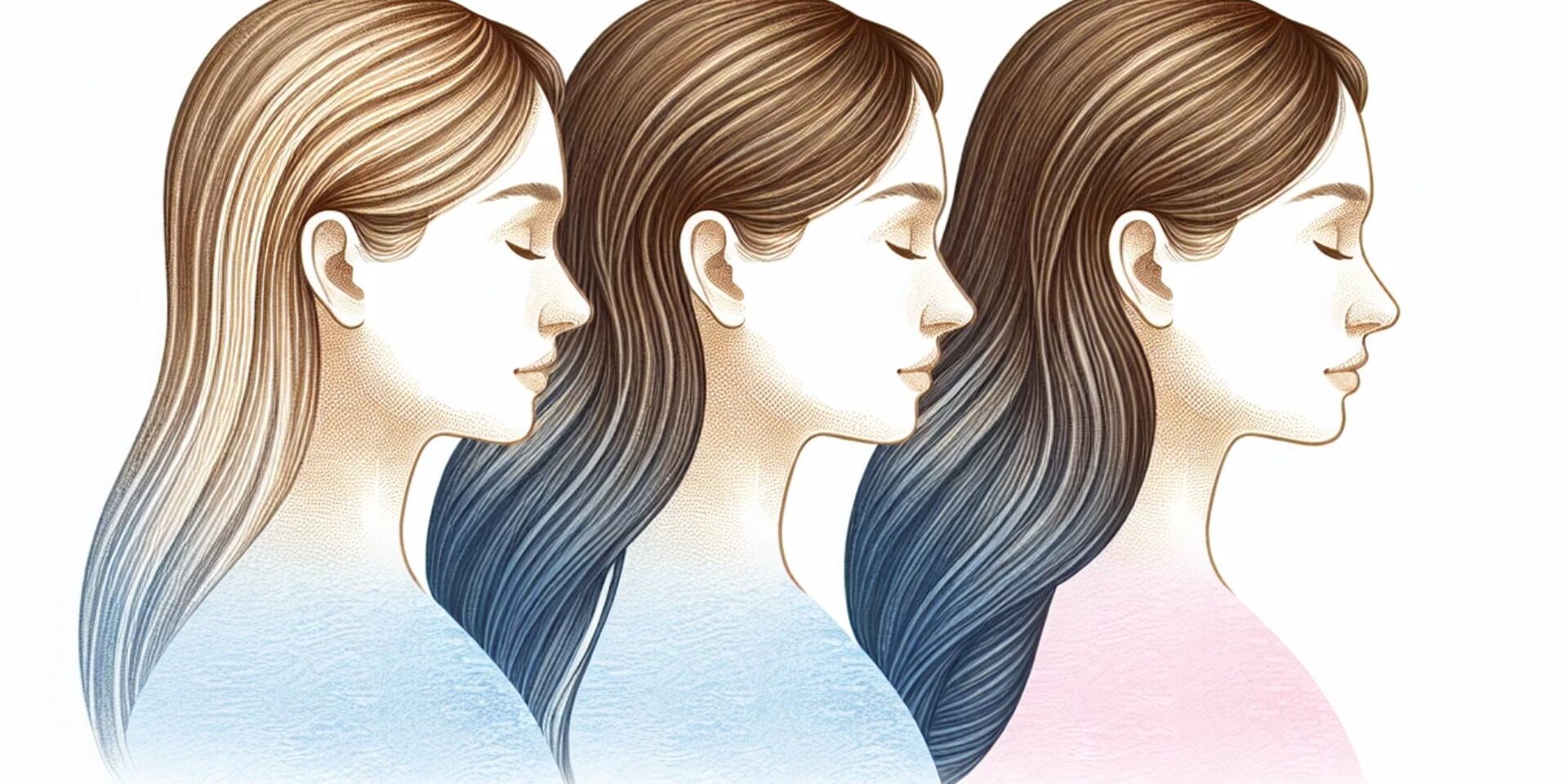Hair Loss Causes by myhairlossadvisor.com

Main Causes of Hair Loss
| Cause | Type of Hair Loss | Who It Affects Most | Pattern/Symptoms | Reversible? | Timeline |
|---|---|---|---|---|---|
| Androgenetic Alopecia (Male/Female Pattern Baldness) | Permanent | 95% of men, 40% of women by age 50 | Receding hairline, crown thinning (men); widening part, overall thinning (women) | Treatable, not fully reversible | Gradual over years |
| Telogen Effluvium (Stress) | Temporary | Anyone, more common in women | Diffuse thinning all over scalp | Usually reversible | 2-6 months after trigger |
| Alopecia Areata | Autoimmune | 2% of population, any age | Round bald patches | Often reversible | Sudden onset, unpredictable |
| Thyroid Disorders | Temporary | Women 5-8x more than men | Diffuse thinning, brittle hair | Reversible with treatment | Months to years |
| Iron Deficiency | Temporary | Mostly women of childbearing age | Diffuse thinning, fatigue | Reversible | 3-6 months with treatment |
| Hormonal Changes | Variable | Women (pregnancy, menopause, PCOS) | Diffuse thinning or pattern loss | Often reversible | Varies by cause |
| Medications | Usually temporary | Anyone taking triggering meds | Usually diffuse thinning | Reversible after stopping | 2-6 months after starting/stopping |
Quick Reference:
- Most Common: Androgenetic alopecia (genetic pattern baldness)
- Most Reversible: Telogen effluvium (stress-related)
- Hardest to Treat: Advanced androgenetic alopecia
- Often Overlooked: Thyroid disorders, iron deficiency
- Most Preventable: Traction alopecia, chemical damage
What's Really Behind Your Hair Loss?
You're standing in front of the mirror, and there's no denying it anymore – your hair is definitely thinning. Maybe you've been finding more strands on your pillow, or that part in your hair is getting wider by the month. The question that's probably eating at you is: why is this happening to YOU?
The truth is, hair loss rarely has just one cause. It's usually a perfect storm of factors working together to mess with your hairline, and figuring out your specific triggers is the first step to doing something about it.
Your genes are probably the main culprit
Let's start with the big one – genetics. If you're dealing with gradual thinning that follows a pattern (receding hairline for men, widening part for women), you're likely looking at androgenetic alopecia. This affects about 95% of guys with hair loss and roughly 40% of women by age 50.
Your genes determine how sensitive your hair follicles are to DHT (dihydrotestosterone), a hormone that basically tells your follicles to shrink and eventually stop producing hair. Thanks, genetics.
Stress is doing more damage than you think
That work deadline that's been keeping you up? Your recent breakup? That financial worry you can't shake? Chronic stress can literally shock your hair follicles into the resting phase, causing them to fall out months later. This type of hair loss, called telogen effluvium, can be particularly frustrating because you often don't connect the dots between the stressful event and the hair loss.
Physical stress counts too. Major surgery, severe illness, rapid weight loss, or even intense crash dieting can trigger significant shedding. Your body essentially decides that growing hair isn't a priority when it's dealing with bigger problems.
Your hormones are all over the place
Hormonal changes can wreak havoc on your hair. Women going through pregnancy, menopause, or dealing with PCOS often notice dramatic changes in their hair thickness. Thyroid disorders – both overactive and underactive – are notorious hair loss triggers that many people don't even realize they have.
Even switching birth control methods can mess with your hair for months. Your hormones control so much of your hair's growth cycle that any significant shift can send your follicles into chaos.
You might be your hair's worst enemy
Sometimes the problem is literally in your hands. If you're constantly pulling your hair back in tight ponytails, using excessive heat styling, or getting chemical treatments regularly, you could be causing traction alopecia. This is especially common if you notice thinning around your hairline or wherever you put the most tension.
Over-washing, aggressive brushing when wet, and using harsh products can also weaken your hair shaft, making it more likely to break.
Your medicine cabinet could be to blame
Medications are sneaky hair loss culprits. Blood thinners, antidepressants, blood pressure medications, and even some vitamins (looking at you, vitamin A) can cause shedding. If you've recently started or stopped any medications and notice changes in your hair, that's probably not a coincidence.
Nutritional deficiencies are more common than you'd think
Your hair needs specific nutrients to grow properly. Iron deficiency is the big one – especially for women – but low levels of protein, zinc, biotin, and vitamins D and B12 can all impact hair growth. If you've been dieting heavily or have absorption issues, your hair might be paying the price.
What you can do about it
The good news? Once you identify what's causing your hair loss, you can often do something about it. Some causes, like nutritional deficiencies or medication side effects, are relatively easy fixes. Others, like genetics, require more strategic approaches.
Start by honestly evaluating your recent life changes, stress levels, and hair care habits. Consider getting blood work done to check for thyroid issues and nutritional deficiencies. And remember – the sooner you address the underlying causes, the better your chances of keeping the hair you have and potentially getting some back.
